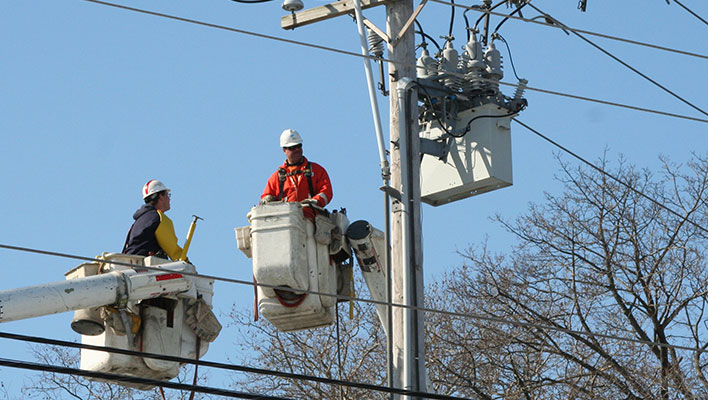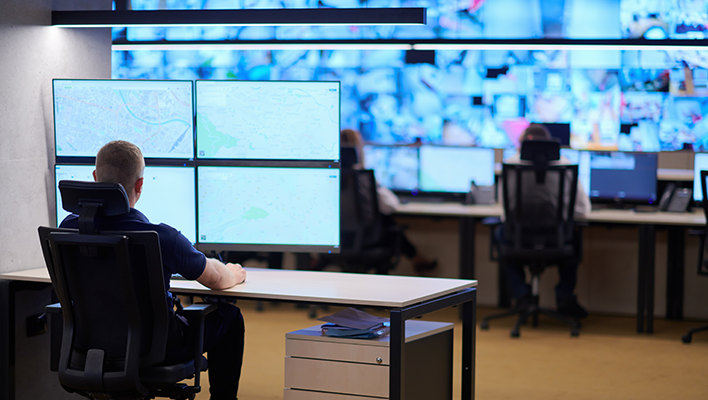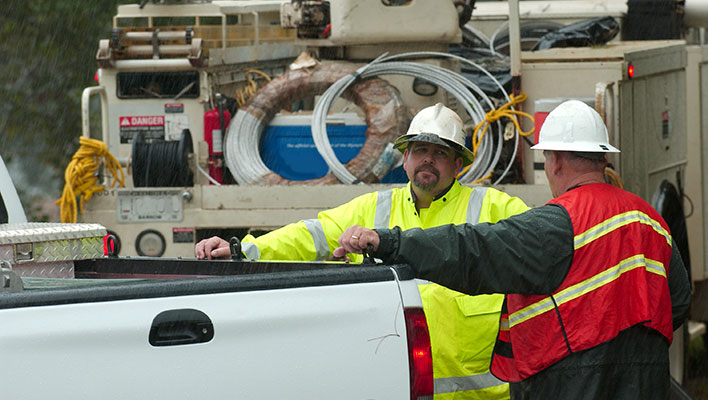Chris McClain is engineering supervisor at Southern Company and is an advocate for helping the electric transmission and distribution industry advance power restoration by leveraging technology to seamlessly manage damage assessment and repair. Bringing insights from the front lines of digital utility transformation, his blog series walks readers through the journey from managing mountains of paper feeder maps to mobile workforce management and power restoration in one of the country’s frequent storm hotspots.
We talk a lot about situational awareness in the power transmission and distribution industry, but what exactly is it? the US Homeland Security Act defines the term “situational awareness” as:
Information gathered from a variety of sources that, when communicated to emergency managers and decision-makers, can form the basis for incident management decision-making.
When it comes to situational awareness amidst storm response and power restoration, this is a great definition. It identifies exactly what is needed: 1) sources of information (e.g., GIS, advanced metering infrastructure, outage management, damage assessment teams), 2) bringing scattered data sources together, and 3) empowering teams to respond, repair, and restore.
Situational awareness can be difficult to achieve. Standing in the way are mountains of paper feeder maps, data silos created by disconnected OMS and GIS systems, and manual processes for communicating vital information (e.g., emails, phone calls, text messages). These barriers must be overcome to deliver on the promise of a single pane of glass through which to view and manage storm response, crews, and assets.
In my first blog in this series, I discussed solving the paper data problem, and in my last blog I talked about igniting the spark of digital transformation. Today, I’d like to share how our team worked to overcome barriers to situational awareness in an effort to build an effective mobile workforce management solution.
After successfully starting a grassroots digital transformation movement among a relatively small group of engineers and lineworkers, it quickly became clear that there were going to be opportunities worth pursuing in the realm of mobile workforce management. There are two primary ways this could have played out: Folks in the field could have been left to use their talents and creativity to try to develop solutions and solve problems with technology as best they could. Or a team could be designated to help drive initiatives at a broader scope. We chose to pursue the latter. We began creating a team (it started out really small) to bridge the gap between field workers and solution providers.
This team would become known as our Power Delivery Technology team. It has evolved quite a bit but is currently primarily made up of tech-savvy former field engineers/designers and GIS analysts/specialists. The goal is to leverage the backgrounds and knowledge of the current tools and methods to help develop strategies for leveraging technology going forward. Depending on the need and complexity, solutions can come from within our own team (e.g., map-based displays from our GIS data, Power BI dashboards, mobile forms). They could also come from working with our internal IT organization (e.g., coding, scripting, hardware and software support). Or solutions could come from partnering with third-party vendors for more advanced/robust applications. The PD Technology team would become the primary driver for this by keeping a finger on the pulse of the field, listening to ideas and suggestions, requirements gathering, piloting applications, soliciting feedback, and helping deploy and support solutions as needed.
When it came to mobile workforce management during storm restoration, we wanted to leverage our GIS mapping data and provide a mobile map-based display. There were so many things to consider:
- Ability to get up-to-date mapping data to mobile users and allow them to take it offline
- Ability to quickly provide access to and manage temporary users (contractors, mutual assistance personnel)
- Simple, intuitive user interface
- Ability to manage lots of data (millions of assets, thousands of users collecting damage info)
- Ability to interface with our GIS mapping data and our Outage Management System
Our capabilities around GIS and OMS were very robust at the time, but when it came to creating an API service for other systems to leverage for situational awareness, we realized the scale was a good opportunity for partnering with an outside developer. This is where we started our long partnership with ARCOS.
In the process of evaluating mobile workforce management solutions, we consistently encountered an inflexible mindset among vendors to adapt to our needs. We heard loud and clear from our field folks that they wouldn’t use anything if it slowed down the restoration effort. Time after time, vendors would attempt to market a solution that had lengthy forms and/or required a large number of clicks to report damage. This approach would be a non-starter for us where our field worker acceptance is key. ARCOS on the other hand came to us with Mobile Workbench and an openness to adapt their technology to damage assessment and our unique business needs rather than forcing us to adapt to their technology.
Innovation is like a team sport where everyone has to work hard to win.
Because creating real time situational awareness is about bringing disconnected sources of information together, our team and the ARCOS team set out to integrate other systems needed for effective storm response, including our outage management system. As we learned, situational awareness can be further improved by creating a 2-way line of communication. With its bidirectional connection to our OMS, Mobile Workbench enables the back office team to send assignments to the field while enabling lineworkers (via the ARCOS mobile app) to automatically send damage assessment notes and patrol status back to the OMS.
We were able to move forward very quickly with ARCOS because of our early wins in digital transformation, successfully piloting mobile devices, acceptance in the field, and the stewardship of the Power Delivery Technology team. In my next blog, I’ll expand on the technology partnership and how we navigated the complexities of providing an intuitive and secure user experience for full time employees and large numbers of contractors.
Did you enjoy Chris’s blog? Check out his previous post: 5 Keys to Advance Power Restoration: Igniting the Digital Transformation Spark




